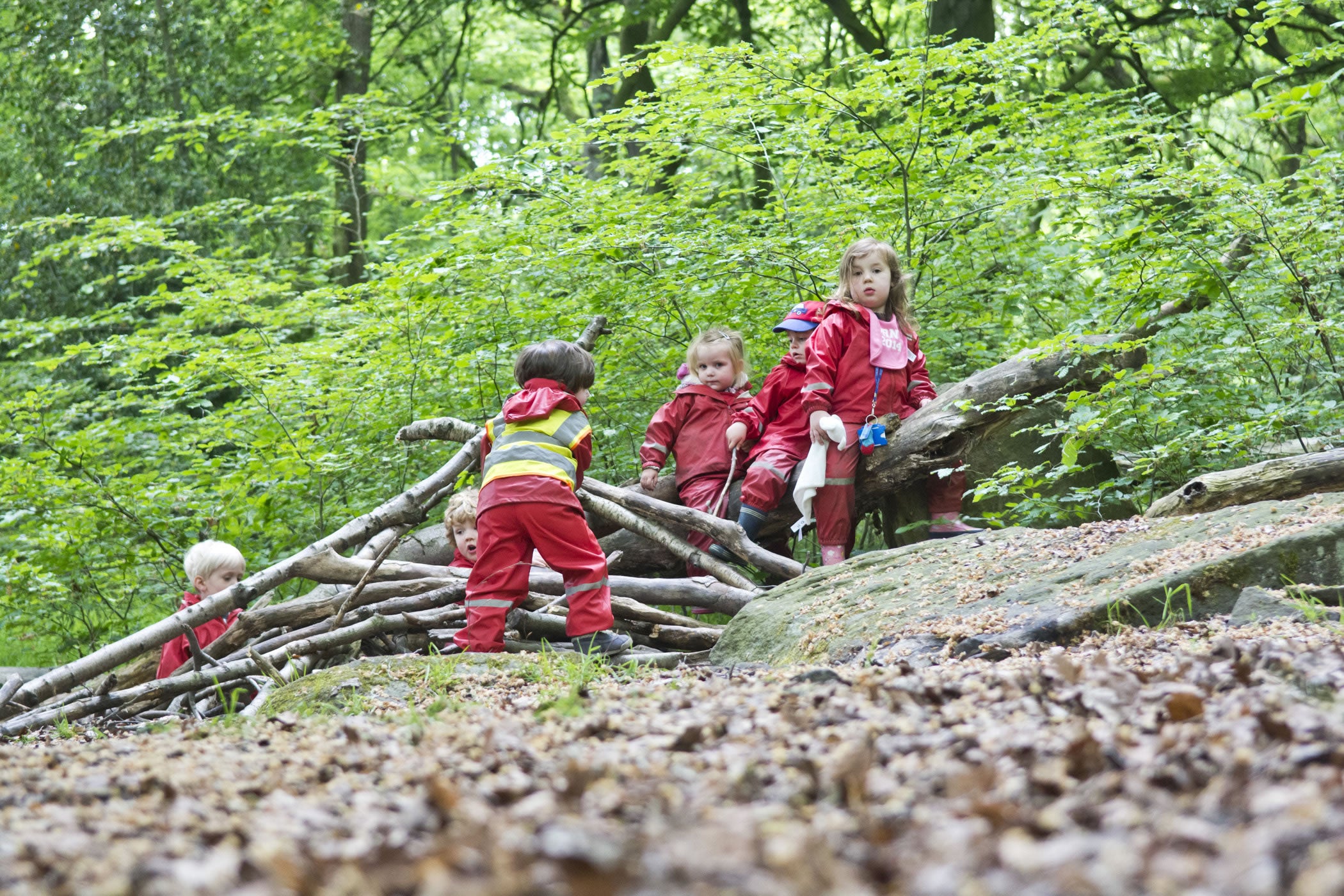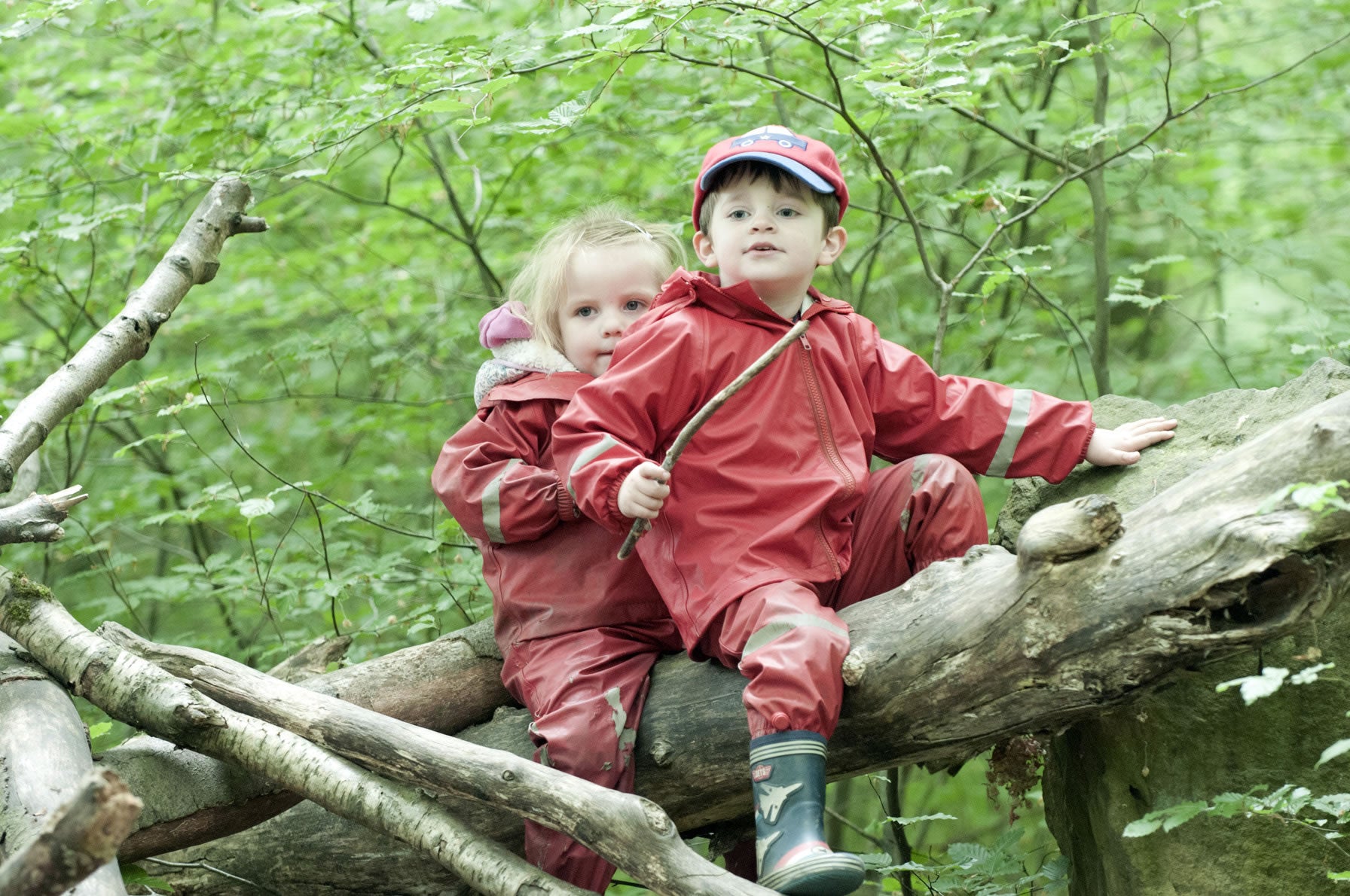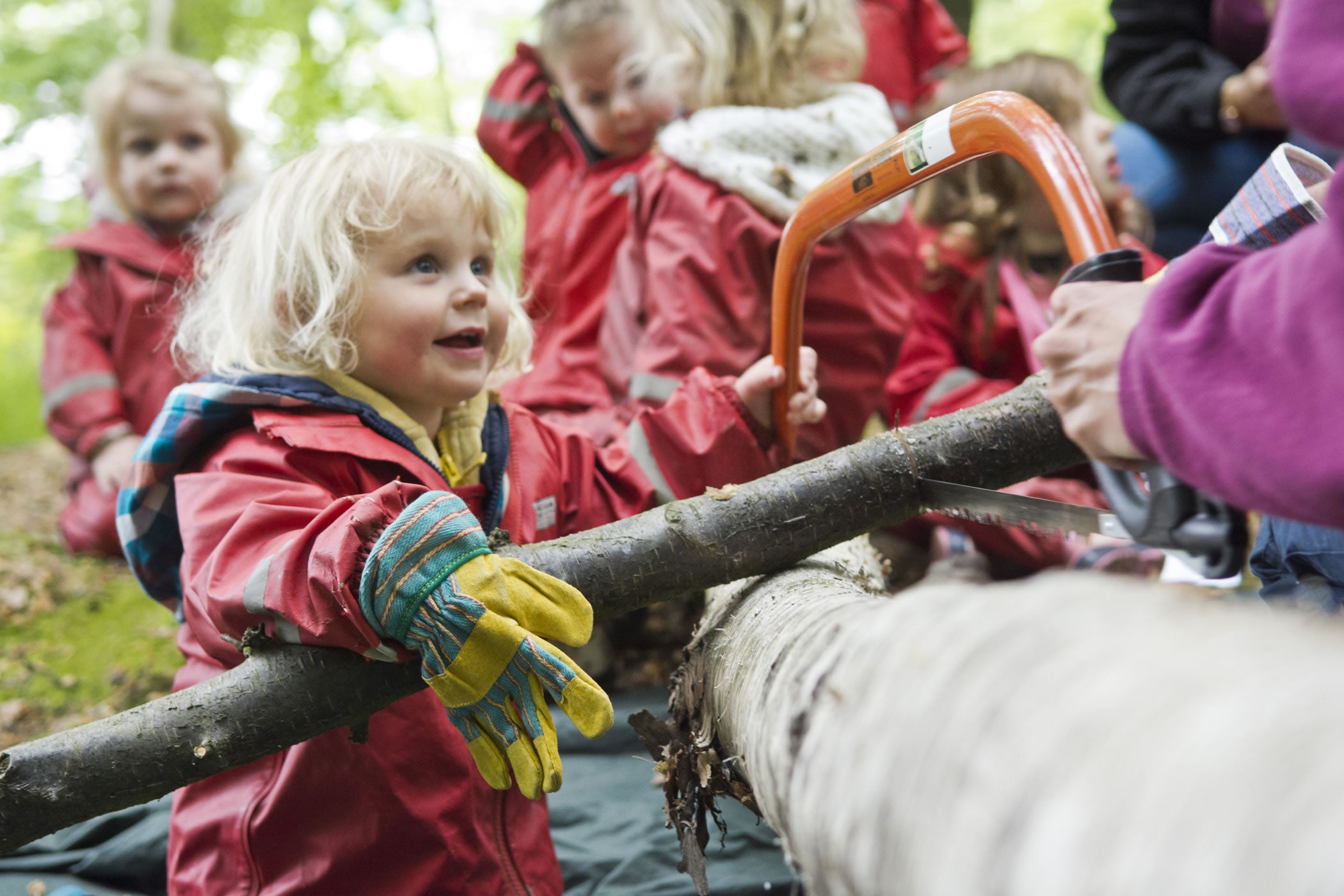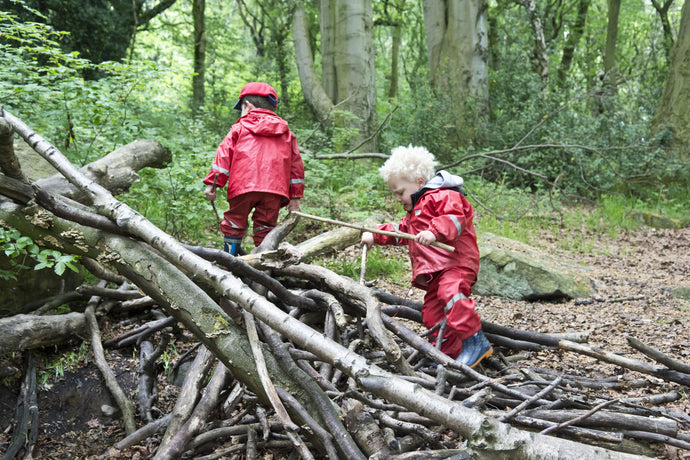- No courses in the cart.
Risk and Benefits in Outdoor Learning and Forest Schools
14
Nov
What are the issues regarding Risk in our society?
Do we take risks and if so when and how and what is the role of the parent, carer and practitioner or teacher in reducing or managing high-risk activities and opportunities?
If we draw the conclusion, which we may, or may not by the end of this analysis, what does this absence of a life without risk in childhood look like, and what are the consequences for us as a society and for children as they experience life and grow up in a world where risks are generally associated in a negative way. If you invest money as a grown-up it is likely that you are asked to fill in a form that asks questions as to your risk-taking levels, i.e. are you a high or low-risk taker?
When you chose the occupation of adulthood, will this be safe and dependable or will it be riskier in its demands, its stability and other aspects? In the past, as we grow older and we leave education, no matter what age, it was likely that we would be in a job for life until retirement at 65 and then a pension would be granted to us. It is now the average that we remain in any job for only 3 years on average.
The consequences of this continual moving and readjusting and movement and social as well as physical revamping and reconditioning entails a great deal of personal and social resilience. The ability to adjust to new guidelines, new processes, new managers, new rules, new social processes, we need to dig deep and find a new resilience to overcome, difficulties or problems that may attack us, like feelings of insecurity, isolation and the pressures that are put upon us to be successful. All of these attributes of both social skills, empathy, resilience, problem-solving, emotional literacy as well as being good at our job, can all be a tester of our stamina, integrity, and resilience. These skills need to be learned, and how are they learn in children today.

Forest School is a prime example where children have the opportunity to learn through play, though the understanding and adherence to certain social and physical boundaries and rules, to understand the bigger picture, to know that on a holistic and emotional level, how the world works. It is a whole experience and as such, all the emotions are engaged during Forest Schools, and even though it may not always appear to be of benefit, the highly emotional content of the experience allows the storage of the session and its intricacies deep in the memory. The issue with childhood is that it sets us a foundation of thoughts, feelings, and behaviours that shape our beliefs, values, and attitudes towards the world and the opportunities that it offers to us as we grow up.
If we have had positive experiences in a range of situations as a child this is more likely to set us up with a positive mental attitude, where everything is possible and there is a belief that I as an individual are capable, able and resilient to whatever the world throws at me. Conversely if I have had very few experiences, few opportunities for positive outcomes, a curtailment of my natural curiosity, sense of adventure and wish to explore and play to the full extent of my capacity, I may well believe that I am no good, that the world is a poor place to live that it offers fearful situations, that I have no experience of dealing with, a range of individuals that I don’t know how to communicate with and this will influence the value that I put on myself, others and the world around me.
Research shows that in order to develop an environmental identity, children need to be present in nature over the long term, and with a passionate and inspired individual. In order to be in nature we need to be exposed to the weather, the seasons, to dirt, to irregularities to the unexpected, to a wide range of people, situations, problems, processes and in these cases we do need to make certain decisions as to how we will manage these and develop the skills in order to progress.

There are different stages of severity of risk at Forest Schools and these go from Comfort Zone, to Play, to Challenge, to Adventure through eventually to misadventure. (Blackwell 2013). Misadventure happens when, in the wrong hands, i.e. those who do not have a full appreciation of the eventualities and consequences, or have a good understanding of the physical, linguistic and cognitive skills of each of the children, or adults that are participating, provide opportunities that end in injury and harm, and this can be physical or philological remember, according to the HSE 1974 Act, Conversely though if a child is continually in their comfort zone, then there will be lack of growth and development for that child. Children’s brains are like muscles, oh, indeed they are muscles! If we don’t stretch them they will not grow stronger, it is through appropriately engaging challenges that growth occurs. It is the role of the practitioner, parent, and teacher, to understand not only the presence of the risk but also the prevalence of any benefits and opportunities to learn new things that the child will be engaged in, for example, Forest Schools, there will be muddy areas in the UK as it is common for rain to be present.
Now when we look at risk we are defining the likelihood of harm coming to pass as a direct interrelationship between, child, person, equipment or environment and the identified hazard. The hazard is the thing that could cause harm, physiological or physiologically. So in relation to the muddy ground, the likelihood is that someone will slip over, and if they do, what are the consequences, i.e. twisted ankle, broken bone, bruising etc, identified on the Risk Assessment forms.
Now let's consider the benefits of walking on muddy ground; environmental awareness and the consequences of the weather and potentially seasons on the earth and the woodland that we find ourselves. We discover that our boots slide about, and if it's really deep, we can make funny noises, we can dance and it can gloop. If its gloops too much, we take some of the mud with us on our boots and it erodes that particular area of woodland potentially exposing tree roots. Now tree roots can then cause a trip hazard. But by each child becoming mindful of the ground and change that happens, then it can increase communication and language, it can develop empathy and social skills, self-awareness and regulation. As a result of regulation it can allow us to problem solve and make decisions;
- How do I need to alter or change my initial plans?
- Do I need to tell someone?
- Do I need to walk around a different way?
- How strong am I?
- Can I balance on here?
- What are the other children doing?
- Can I help them, support them and tell them of the dangers that are here?
I can tell the practitioner and as such, I can develop my relationship with adults as information sharers and people who value me as a person. They can give me instructions and I can then understand those, or ask more questions.
So, the presence of the risk, even though creating a high likelihood of incident or accident, is also surrounded by many benefits and positive outcomes. Emotions that are created in challenging situations produce neural connections and as such these help to store the memory in the hippocampus. If its there in my historical timeline of experiences then I can use that information in the future to make judgments and conclusions about new experiences, when I need to decide if I can achieve something, if its worth the effort, or if the outcome of the past experience was negative, as to whether to avoid that situation again in the future.
Children need to engage with risk in order to learn new skills and to embed knowledge and understanding in their cognitive and emotional centers of the brain. Challenge during outdoor play and at Forest Schools where deep-level learning opportunities are presented by the Level 3 Practitioner allow the brain to process and take in a wide range of situation and environmental information very rapidly and allows children to test their own limits of physical, intellectual and social development Bob Hughes suggests that there are over 16 different play types and children need to test the boundaries in each one of those types in order to learn the rules of engagement in life for when they grow, mature and develop.
If a child has not had the opportunity to push their physical boundaries, to balance, to climb, to move, to stretch, to throw, to jump and swing then there will be a serious deprivation physically and emotionally for that child.
If they have not been given an opportunity to test the boundaries of communication, but trying out words, sentences, and intentions in a safe, environment, then they will be inhibited in offering their own opinions and thoughts later in life when it becomes important that they do.
If children are not able to explore social boundaries and understand that they are able to make and set their own in certain circumstances, then they will be fearful of those boundaries set by others as they grow, they may lack the ability to question them, or to follow them and as such put themselves into greater danger later in life, where the risk of physiological and psychological harm could be greater.
If a child has no sense of self-worth and self-awareness, then it is very difficult for that child to make rational and balanced decisions as they grow as they lack confidence and resilience. The challenges offer opportunities to get things wrong, to have to rethink at Forest Schools and as a result to create something new and better and to know why it is better and more robust.

By using the tools with a level 3 practitioner it is possible to understand that the process of rule setting, learning tools talks and being able to demonstrate these with ease and unconscious competence, allows children the freedom to understand trust. It’s the risk that is involved in using the tools that build positive attitudes and the robust way of working. Young boys especially, but also with girls like ritual, repetition and focused processes. It helps them to know where they are, feel safe and confident.
By using a focused and repetitive model, this will very quickly aid learning of risky processes and allow children to use and adapt these and become skilled craftspeople if they are so motivated. We live in a world where children are very ‘mollycoddled’ and protected. There is a decrease in the external school visits, the distance children are allowed to travel independently away from home, and the age at which they can do this.
The media has a lot to answer for with regards to influencing parental decisions and choices It is interesting though that if we look at the fear that allowing our children to play in the woods is creating, then by looking at the sometimes scary marketing agendas of big companies like Nickelodeon and the message it is selling to children regarding parental and commercial behaviours, with a little more personal investigation can be much more sinister and risky in the long term, than allowing our children to function and play long term at Forest Schools. But the reality is that the protection we as parents and teachers provide could be in fact creating more dangerous and more serious issues for our children, such as obesity, diabetes, heart conditions, depression, lack of social ability and a dependence in the words of others through social media for our sense of self worth and place in the world as opposed to the confidence that we can ‘do ‘that, be that, develop that, grow that, plan that, reflect on that. Forest Schools, is truly, not the only process where risk can be learned, but is a good one, and as it relates to the research that suggests that children should have a right to play, to experience the world and to grow in understanding, then nature is the prime place to learn in a holistic way about risk, a supposed to discussing the aspects in the classroom.




